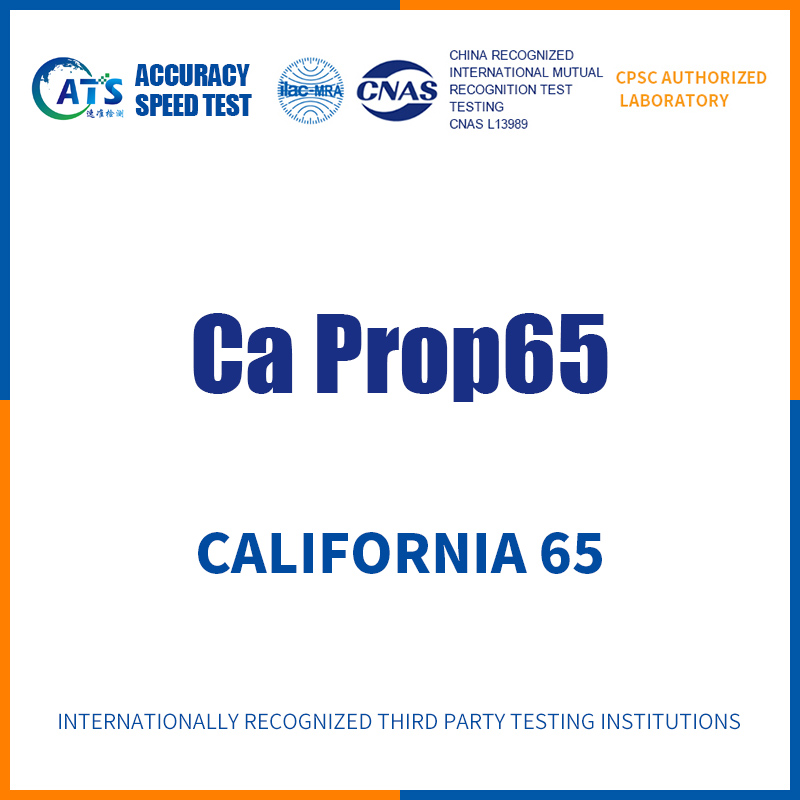Introduction
California Proposition No. 65 is the "Drinking Water Safety and Toxic Substance Enforcement Act of 1986", which was issued in November 1986. Its purpose is to protect California residents and the state’s drinking water sources so that they do not contain water sources that are known to cause cancer, Birth defects or other substances that are harmful to reproduction and development, and the residents should be informed truthfully when such substances appear in the product. The California List of 65 Controlled Substances was issued by OEHHA and updated quarterly. It was first published in 1987. Products sold to California must comply with California Act 65.
The list is updated at least once a year, and more than 960 chemical substances are currently included in the substance list.
Which consumer products have experienced litigation?
| Lawsuits raised against manufacturers and retailers involved a wide range of consumer products, including: |
| • Headphone |
• Camera |
• Sound |
• Toys |
• Ceramic tableware |
• Crystal products |
| • Correction fluid |
• Outdoor decorative glass products |
• Textiles |
• Jewelry |
• Lead fishing tackle |
• Nail polish |
| • Dental fillings |
• PVC computer peripherals |
• PVC electrical tape |
• PVC optical fiber cable |
• PVC lunch box |
• Paint |
Limit
California 65 controls and evaluates whether specific products contain toxic substances based on similar product court cases. It is not recommended to test more than 960 chemical substances on the list one by one for a product, because it is almost impossible for a product to contain all the chemical substances listed in the list. The types of chemical substances and limit requirements for specific product control need to be based on the latest judgments of similar product cases. For example, if a company loses a lawsuit because a component of a product contains lead, a limit will be announced in the court, then this limit it will be used as the limit for lead content in the components of this type of product.
For different products, different materials, the controlled chemical substances are different, and the limit requirements are also different.
Some of the cases in California's Proposition 65 require the following table.
| No. |
Covered products |
Substance |
Limit |
| 1 |
Toys and child care products |
Lead |
Paint and coating materials ≤90ppm PVC material, baby bib ≤200ppm Other materials≤600ppm |
| Phthalates |
DEHP, DBP, BBP, DIDP and DnHP are less than 0.1% |
| 2 |
Children's jewelry |
Cadmium |
≤300ppm |
| 3 |
Fashion accessories
(Clothes such as gloves and hats, bag ornaments and zippers, belts, cosmetic bags, luggage and ID bags, covers for magazines or address books, covers for mobile electronic devices, glasses cases, shoes, handbags, wallets, coins Wallets, wallets, jewelry, keychains,) |
Lead |
Paint and coating materials ≤90ppm
Leather≤300ppm
PVC material≤200ppm
Other materials≤300ppm |
| Phthalates |
DEHP, DBP and BBP are less than 0.1% |
| 4 |
Headphone cable |
Phthalates |
BBP, DBP, DEHP,DIDP, DINP, DNHP are less than 0.01% respectively |
| 5 |
Halloween costume supplies |
Formaldehyde |
under 3 years old :20ppm, over 3 years old: 75ppm |
| 6 |
Thermal paper\PC materials and other supplies |
Bisphenol A |
Thermal paper is less than 200PPM, the limit of different materials is different |
If you don’t do California CP65 testing, you must put a warning label on the product in a prominent place.
If products are exported to California without California CA65 standard testing, it will cause immeasurable damage to the manufacturer. At that time, your product will be uninterested and will lose the market. If your product is lucky enough to enter the other party’s market, you will not put a warning on the product. Once the mark is found, you will encounter legal proceedings, high fines and even criminal detention.
Warning
The bill stipulates that in the course of business, anyone is prohibited from exposing users to these harmful substances without first warning the carcinogenic or reproductive toxicity substances contained in the product that are known to California. Any company with more than 10 employees or a company that sells products to California must affix clear and reasonable warning labels on products containing chemicals that have been known to cause cancer or reproductive toxicity. This warning must clearly let the public know that this chemical substance is carcinogenic and reproductive toxicity, so that consumers can decide whether to buy the product after learning the information about the chemical substance contained in the product.
Warnings can take many forms, directly placed on the product label, or posted in the workplace, retail stores or distribution notices, printed in newspapers and other methods. Once a chemical is included in the list, the company will have to complete the warning within 12 months.
Consumer products containing known carcinogens must be attached to any chemicals sold in California that release carcinogenic or regenerative toxicity.
"WARNING:This product contains a chemical known to the State of California to cause cancer."
"WARNING:This product can expose you to a chemical [or chemicals] known to the State of California to cause cancer and birth defects or other reproductive harm. "

 Customer hotline:+86-136 6283 9331
Customer hotline:+86-136 6283 9331 Customer hotline:+86-136 6283 9331
Customer hotline:+86-136 6283 9331












